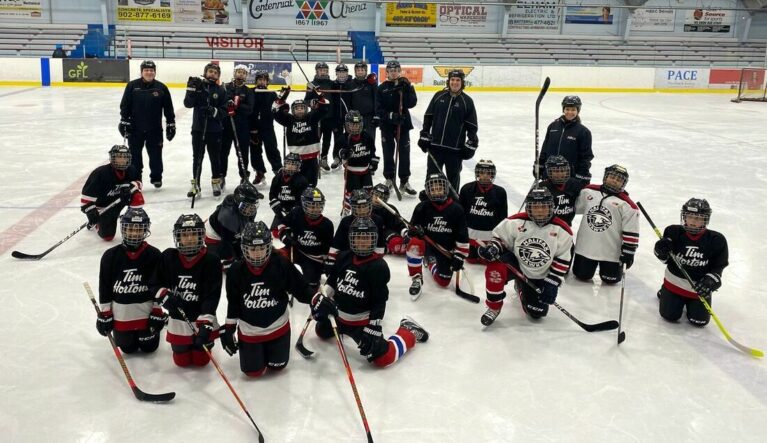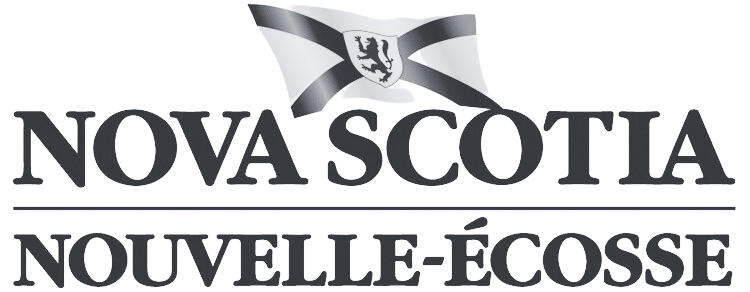Written by Denise Withers
When Dr. Ahmad Hussein opened online registration for a new Intro to Hockey program at the Ummah Mosque and Community Center, he couldn't believe what happened next. In less than ten minutes, the program went viral, with community members snapping up all 20 spots.
Overwhelmed by the response, he scrambled and shut things down – but not before almost 300 more Muslim families signed up.
Everyone, it seems, including newcomers to Canada, wants to play hockey. But something's stopping them. After working on similar issues in other sports like tennis and soccer, Ahmad had a hunch he knew what it was – secret society syndrome.
People who grow up with hockey – Canadians in general – just know how the game works. They get information about everything – where to sign up, what to buy, how to dress, when to arrive and how to cheer – by being immersed in hockey culture. Even if they don't play the game themselves, they have family and friends who do.
But all this valuable intel is unintentionally hidden from newcomers, who are keen to share the ultimate Canadian experience. "If you're in Canada and you're listening to all your friends talking about hockey and what they watched and what they did on the ice, then you also want to play hockey," Ahmad notes.
Uncovering hidden barriers
Yet, despite all our talk about diversity, equity and inclusion, despite Canada's reputation for being a welcoming nation, most newcomers are never invited to play the game. They remain effectively locked out of hockey, excluded by invisible barriers too tough to overcome amid issues of race, language, faith and affordability.
As a newcomer himself, Ahmad ran into all the same obstacles when his kids begged him to sign them up for hockey. The only thing that saved him was his Canadian inlaws, who helped him navigate the system.
So he joined the Future of Hockey Lab (FHL), to see what he could do. That's where he met Craig Robinson.
Like Ahmad, Craig and his family were newcomers to Canada, having moved from the UK seven years earlier. Like Ahmad, Craig's kids wanted to share in the Canadian experience of playing hockey – not just for the fun of the game – but because they wanted to fit in. Yet, when he went to sign his kids up, Craig too found himself shut out, stumped by the secret culture of the hockey system. It was only with the help of his hockey-playing neighbours that he managed to find his way through.
An unexpected partnership
Today as Vice-President of the Halifax Hawks Minor Hockey Association, Craig leads the Hawks' initiatives for engagement, diversity, equity and inclusion. Their goal is to make the game more accessible – to not only increase the enjoyment of the sport but also to better serve their increasingly multi-cultural community.
It's a well-kept secret that registration in hockey is down these days, largely because the game doesn't reflect the changing face of Canada. Seen mostly as the domain of white Christian boys, hockey is in trouble. And the only way it's going to survive is to become more inclusive.
Encouraged by the Lab's focus on learning by doing, Ahmad and Craig decided to put together a 10-week "getting ready for hockey" program for 20 Muslim youth who've never played before to see how they could change things. The plan was to give the kids and their families everything they'd need – equipment, ice time, coaching and lots of support – so they could get enough hockey experience to be able to join a league on their own in the future.
Along the way, Ahmad and Craig knew they'd need to draw on innovation tools from the FHL like testing and prototyping to learn what worked and what to change for next time. And they definitely learned a lot!
Learning by doing
Before they even got on the ice, they ran into all kinds of unexpected challenges getting the kids geared up. Working with a local hockey store, and with funding from Jumpstart and the Lab, they thought they could fit all 20 kids with complete hockey kits in two hours. Instead, it took ten hours, over three days.
Since the kids and parents had no idea how the gear worked, the team had to explain the function of every piece of equipment, 20 times. Plus, they had to figure out how to do things like fit a helmet over a hijab. (Solution – use special sports hijabs). And how to demonstrate that skates have to be tight to work. (Answer – you can't. That has to be learned through experience.)
"I actually think we were prototyping on a daily basis," Craig observed.
"Having people help the kids get dressed. Telling the girls to not have their hair tied up. So my wife was helping the girls get ready and she kept saying, ‘Apologize to your Mom’, because she was having to tear out various ponytails that wouldn't fit under the helmets. All the little things no one ever talked about before."
Finally, when the kids had all their gear, it was time to hit the ice. That's when things really got wild, even though the Lab team had prepared meticulously for weeks. "It was a bit of a zoo,” Craig laughed. “We were just coming to the end of COVID restrictions. So parents couldn't go to dressing rooms. Parents couldn't be on the bench. Most kids showed up late and not dressed, despite specific instructions on how to get ready." "We had to let them learn by experience,” Ahmad added. “This is why you just missed 20 minutes of ice time. There are only 55 minutes of ice time and here's how it works."
Over the next few weeks, the project team continued to learn on the fly, finding ways to accommodate players fasting for Ramadan, negotiating double-bookings and creating places for parents to pray while at the rink.
Getting the right support at the right time
Through it all, they relied on the Lab for ongoing help.
"Working with the Lab was critical,” Ahmad notes. “They not only helped us manage our learning process and fine-tune our prototypes. But they also supported us financially because the cost of equipment was more significant than we anticipated, as was ice time. So we're grateful and thankful for that support."
The Lab and its network weren’t the only ones backing the project. Parents, players and coaches from the Hawks and Metro West hockey associations stepped up to help with everything from taping sticks to female coaching support.
Despite all the chaos, the kids had a blast, slipping and sliding across the ice like chunky penguins on skates, finally realizing their dream of playing hockey and being part of the team, just like every other Canadian child.
Though the project was a success in enabling the youth to play the game, Craig knows there's much more to do going forward, including building future capacity to support hockey in the Muslim community. "I'm having this conversation with Ahmad right now. This program has relied a lot on the Hawks. And while it does work, it’s not sustainable. We can only support a limited number of special programs like this. Though we'll always be there for support, he and his community will need to work hard to develop the knowledge, resources and volunteer base to serve Muslim players outside our enrollment area and take it to the next level."

Scale and sustainability come next
That said, Craig's excited about the possibilities. "I think there'll be legacies coming out of the Lab to tackle questions like, 'What are the real barriers? What's a different model that we could do to address some of those things?'
And ultimately, just looking at the 30,000 people the Mosque serves, even if we could bring just another 300 families with multiple kids into hockey, that would have an incredible impact in the Muslim community, which is massively under-represented at this time."
Ahmad agrees. "I have 280 families that still want to play hockey. And each one of those families has multiple kids. So Craig and I are all already in the process of trying to figure out how to get them started. Not necessarily through our program, but through programs that other hockey leagues can create specifically for them. But the fear we have is that, without the dissemination of proper knowledge like we're doing through the FHL, most of these people may not actually continue beyond the first session of hockey."
To try to tackle this issue, they've teamed up with another FHL project, run by four Muslim youth from the Mosque, to build an online resource with information and videos that can make this secret knowledge available to their members.
Still, Ahmad knows that this access to information challenge isn't limited to the Muslim community. He sees the potential for this early innovation work to get youth from across Canada into hockey and ultimately change the narrative on sport in Canada.
"The problem is that mainstream hockey programs like First Shift are marketed to people who are already exposed to or playing hockey. But most newcomers have never heard of First Shift. And that's not unique to the Muslim community. It's true for African, East Indian, Asian – every other immigrant community. The fact that our program filled up in ten minutes shows that there's both an issue with and a demand for better access to and information about getting started in hockey.”
“To me, the Future of Hockey Lab represents a means and methodology to change the sport in a positive way, an opportunity to improve the sport without changing the sport, if that makes sense. And my hope is that this experience will help other sports organizations learn how to adapt to the times by opening up their Board memberships to people of diverse backgrounds. So that they can create opportunities for their sports to improve and evolve the way we're doing right now in hockey."



